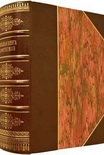Pelle the Conqueror, Martin Andersen Nexø [best fantasy books to read .TXT] 📗

- Author: Martin Andersen Nexø
Book online «Pelle the Conqueror, Martin Andersen Nexø [best fantasy books to read .TXT] 📗». Author Martin Andersen Nexø
By Martin Andersen Nexø.
Translated by Jessie Muir and Bernard Miall.
This ebook is the product of many hours of hard work by volunteers for Standard Ebooks, and builds on the hard work of other literature lovers made possible by the public domain.
This particular ebook is based on a transcription produced for Project Gutenberg (books 1, 2, 3 and 4) and on digital scans available at the Internet Archive (books 1, 2, 3 and 4).
The writing and artwork within are believed to be in the U.S. public domain, and Standard Ebooks releases this ebook edition under the terms in the CC0 1.0 Universal Public Domain Dedication. For full license information, see the Uncopyright at the end of this ebook.
Standard Ebooks is a volunteer-driven project that produces ebook editions of public domain literature using modern typography, technology, and editorial standards, and distributes them free of cost. You can download this and other ebooks carefully produced for true book lovers at standardebooks.org.
NoteWhen the first part of Pelle Erobreren (Pelle the Conqueror) appeared in 1906, its author, Martin Andersen Nexø, was practically unknown even in his native country, save to a few literary people who knew that he had written some volumes of stories and a book full of sunshiny reminiscences from Spain. And even now, after his great success with Pelle, very little is known about the writer. He was born in 1869 in one of the poorest quarters of Copenhagen, but spent his boyhood in his beloved island Bornholm, in the Baltic, in or near the town, Nexø, from which his final name is derived. There, too, he was a shoemaker’s apprentice, like Pelle in the second part of the book, which resembles many great novels in being largely autobiographical. Later, he gained his livelihood as a bricklayer, until he somehow managed to get to one of the most renowned of our “people’s high-schools,” where he studied so effectually that he was enabled to become a teacher, first at a provincial school, and later in Copenhagen.
Pelle consists of four parts, each, except perhaps the last, a complete story in itself. First we have the open-air life of the boy in country surroundings in Bornholm; then the lad’s apprenticeship in a small provincial town not yet invaded by modern industrialism and still innocent of socialism; next the youth’s struggles in Copenhagen against employers and authorities; and last the man’s final victory in laying the foundation of a garden-city for the benefit of his fellow-workers. The background everywhere is the rapid growth of the labor movement; but social problems are never obtruded, except, again, in the last part, and the purely human interest is always kept well before the reader’s eye through variety of situation and vividness of characterization. The great charm of the book seems to me to lie in the fact that the writer knows the poor from within; he has not studied them as an outsider may, but has lived with them and felt with them, at once a participant and a keen-eyed spectator. He is no sentimentalist, and so rich is his imagination that he passes on rapidly from one scene to the next, sketching often in a few pages what another novelist would be content to work out into long chapters or whole volumes. His sympathy is of the widest, and he makes us see tragedies behind the little comedies, and comedies behind the little tragedies, of the seemingly sordid lives of the working people whom he loves. Pelle has conquered the hearts of the reading public of Denmark; there is that in the book which should conquer also the hearts of a wider public than that of the little country in which its author was born.
Otto Jespersen,
Professor of English in the University of Copenhagen.
Gentofte, Copenhagen.
April, 1913.
It was dawn on the first of May, 1877. From the sea the mist came sweeping in, in a gray trail that lay heavily on the water. Here and there there was a movement in it; it seemed about to lift, but closed in again, leaving only a strip of shore with two old boats





Comments (0)